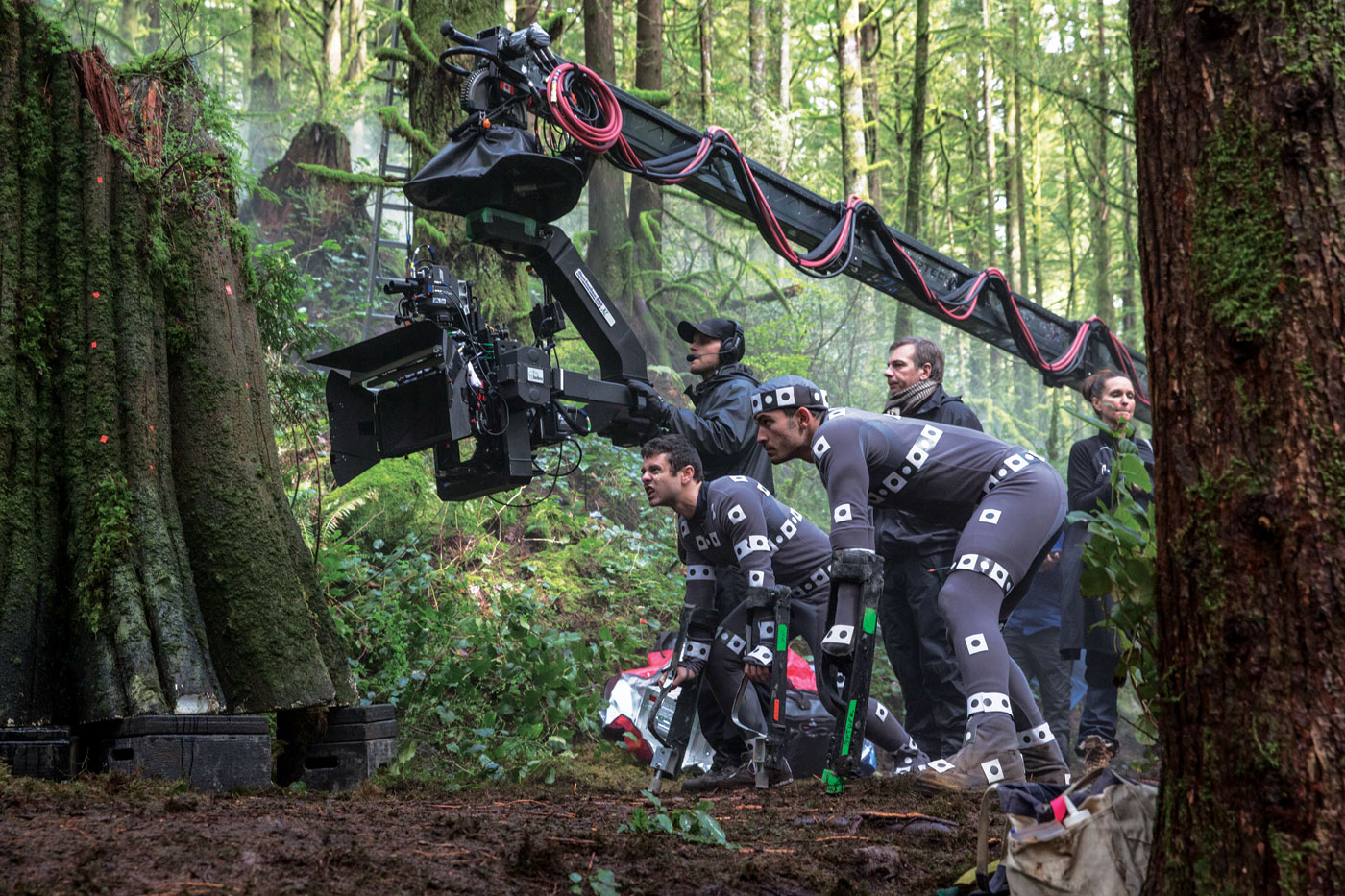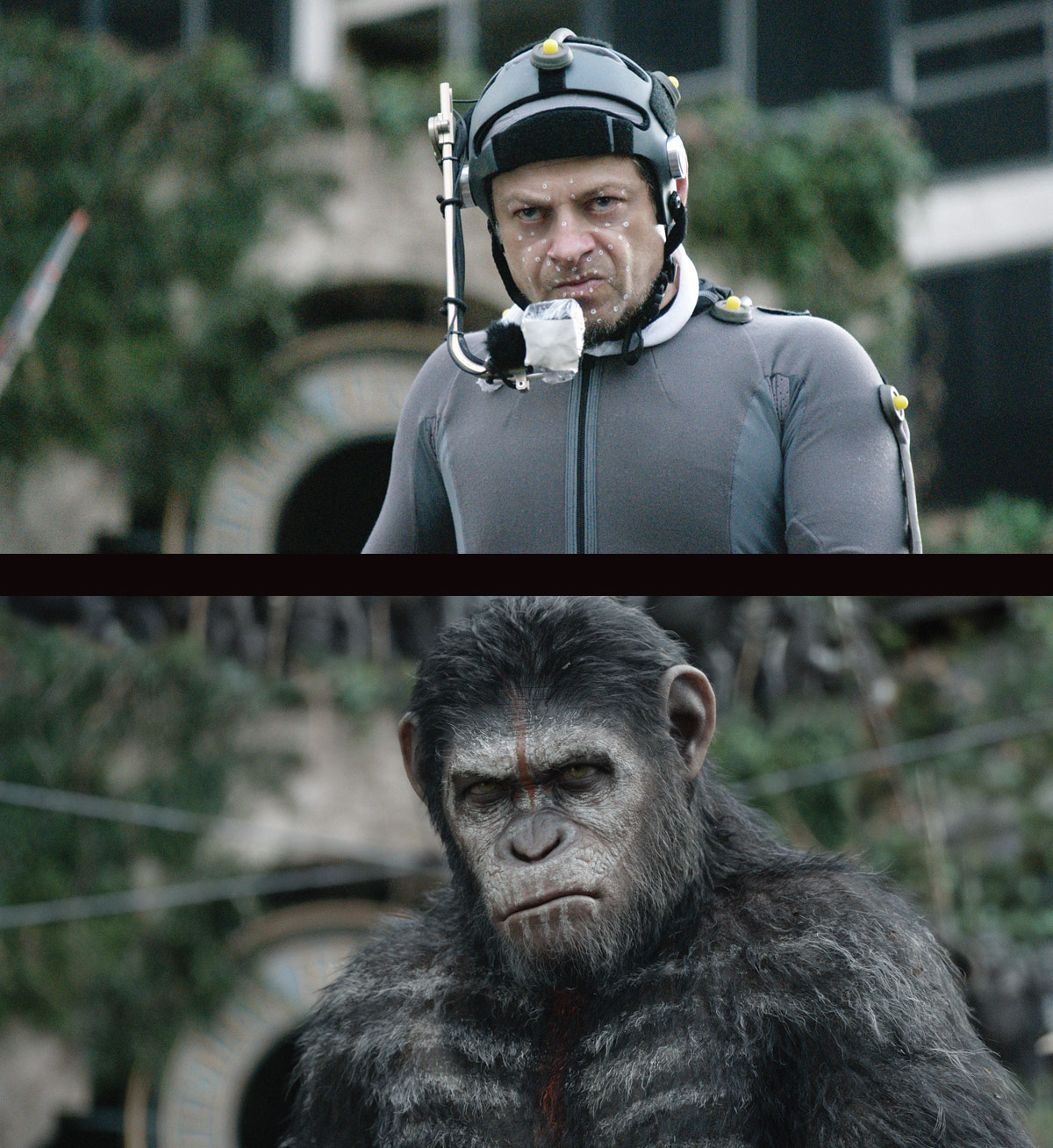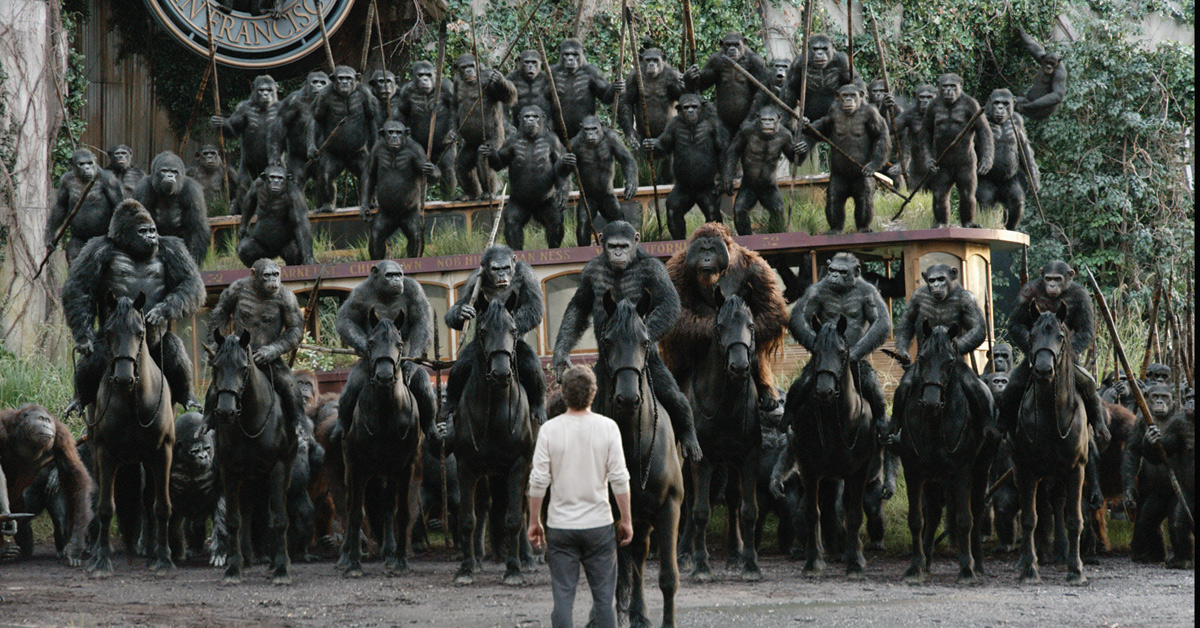 How Michael Seresin, ONZM BSC, and the creative team from Dawn of the Planet of the Apes found the “missing link” of cinematic emotion.
How Michael Seresin, ONZM BSC, and the creative team from Dawn of the Planet of the Apes found the “missing link” of cinematic emotion.
The Planet of the Apes franchise has come a long way from the days when John Chambers’ classic makeup design brought walking, talking apes to life in 1968. In its day, it was startling and striking – audiences had never seen anything like it.
Director Tim Burton attempted a reboot in 2001, which, though visually exciting, didn’t bond audiences to the monkey madness on an emotional level. It wasn’t until director Rupert Wyatt offered up Rise of the Planet of the Apes in 2011, and its sequel, Dawn of the Planet of the Apes, from director Matt Reeves, that contemporary filmmakers connected audiences with the ape characters in a brand new way.
That approach combines the skillfully layered performances of actor Andy Serkis (Gollum from The Lord of the Rings trilogy) with Weta Digital’s Performance Capture system. The methodology allowed director of photography Michael Seresin, ONZM BSC, to photograph Serkis on set with the human actors, interacting in a relational manner never seen on screen. We asked freelancer Matt Hurwitz to speak to the film’s main creative team – Reeves, Seresin, Serkis, Production Designer James Chinlund, Weta Senior Visual Effects Supervisor Joe Letteri, Weta Visual Effects Supervisor Dan Lemmon, and producer Dylan Clark – to uncover the missing link that’s helped revive and expand this most unique of Hollywood franchises.
EVOLUTION
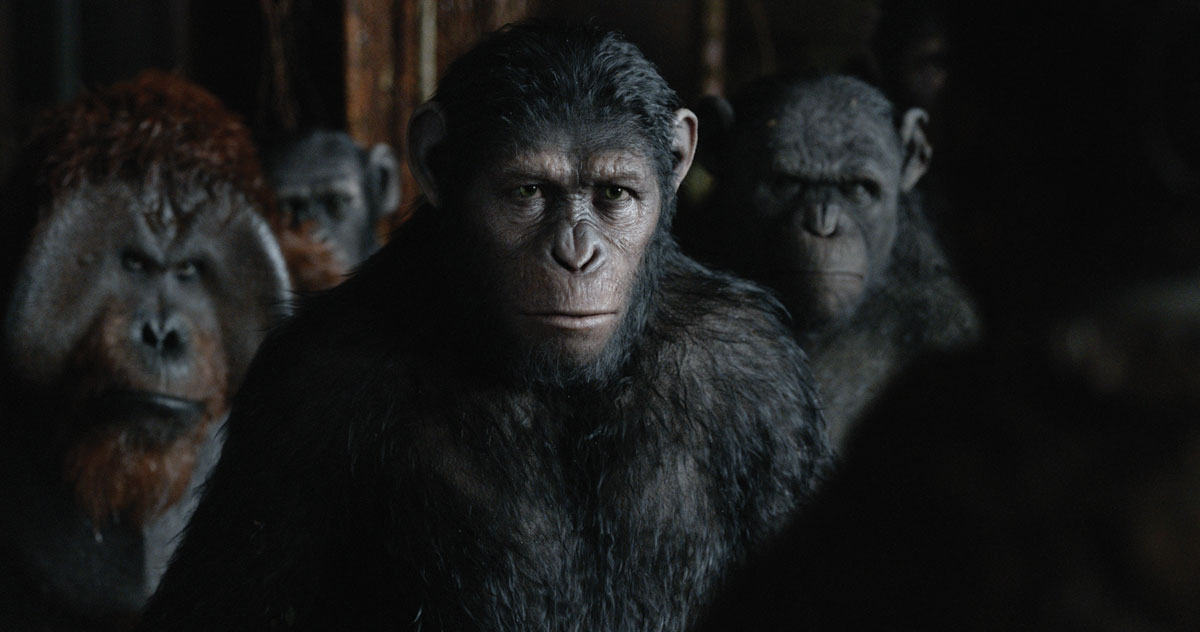 Matt Reeves: When I was a kid, I was obsessed with Planet of the Apes. I had records, I had dolls, I had an 8-millimeter excerpt reel of Beneath the Planet of the Apes. I wanted to be an ape! So when I saw Rise, I was so taken with it, because I actually had the experience of being an ape in a way that I never thought of as a kid – which was emotionally. What Andy Serkis and Weta did to create Caesar gave you an incredibly deep, emotional identification with a CG character. I thought it was amazing. My desire for this film was to carry that forward.
Matt Reeves: When I was a kid, I was obsessed with Planet of the Apes. I had records, I had dolls, I had an 8-millimeter excerpt reel of Beneath the Planet of the Apes. I wanted to be an ape! So when I saw Rise, I was so taken with it, because I actually had the experience of being an ape in a way that I never thought of as a kid – which was emotionally. What Andy Serkis and Weta did to create Caesar gave you an incredibly deep, emotional identification with a CG character. I thought it was amazing. My desire for this film was to carry that forward.
Dylan Clark: We didn’t want to make a post-apocalyptic movie. We wanted to come in after that and see how humans that have survived are trying to rebuild. So it’s really the worlds of the ape civilization and the human survivors’ rebuilding effort colliding, and what would happen after that.
Reeves: It’s part of the journey along the way back to the original Planet of the Apes. But at this moment, it’s about the apes’ evolution – language, civilization, and relationships. Caesar is no longer the revolutionary. This story is a moment to find out whether or not there was a chance for humans and apes to co-exist – but keeping in mind that the original story wasn’t Planet of the Humans and Apes, it’s Planet of the Apes.
THE DARK SIDE
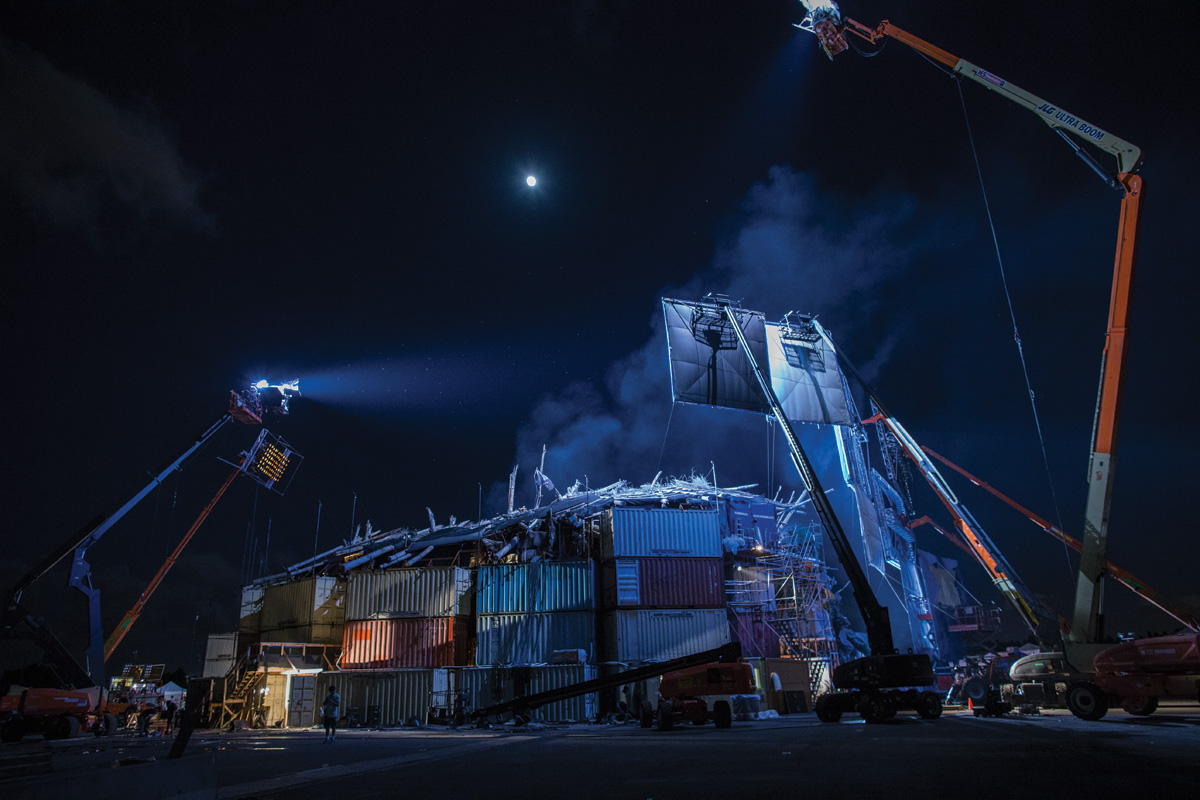 Clark: Going from Rise to Dawn, our goal was to get a more naturalistic and dark tone, yet make it feel emotional. We didn’t want it to feel like a CG movie or that we were on stages. So 80 percent was shot on location, on exterior sets. There are no lights and electricity, as Earth is reclaiming the world. Michael was able to give us that real, naturalistic feel with his “light painting,” as we called it.
Clark: Going from Rise to Dawn, our goal was to get a more naturalistic and dark tone, yet make it feel emotional. We didn’t want it to feel like a CG movie or that we were on stages. So 80 percent was shot on location, on exterior sets. There are no lights and electricity, as Earth is reclaiming the world. Michael was able to give us that real, naturalistic feel with his “light painting,” as we called it.
Michael Seresin: It’s definitely a low-key, dark film. And the big thing for me was how to make that feel not artificially lit. I used a lot of single-source lights and deep shadows. In a world where there’s no electricity and no lights, you have to justify where the light comes from. That’s a matter of using your imagination, and saying, “Okay, we’ve got a couple of airshafts coming down – let’s pour some sunlight down there. And maybe that hits the water and then bounces back up.” Because the reality is that you must have some light. What I like about things being darker, especially in a dramatic film like this, is that when an audience doesn’t see everything, it fires their imagination. They get curious, and drawn in.
Reeves: Another part of that was shooting native 3D, but with Michael and I wanting to maintain a 2D aesthetic, like you would find in a non-effects film. That meant shallow focus, which, to me, is something that makes things feel intimate and real – with natural light and real focus falloff, in the CG as well. [That approach] creates an immersive 3D, such as when we’re in places like the forest. But the aesthetic is still very 2D, which creates a higher level of reality.
Seresin: That was one of the first things we decided when we found out we would be shooting native 3D. And we decided to only use that third dimension for dramatic effect, when it’s really required. We actually had a depth scale for the stereo image, from 0 to 5. And we were around three-quarter to one or one and one-quarter most of the time.
MONKEY SEE, NOT DO
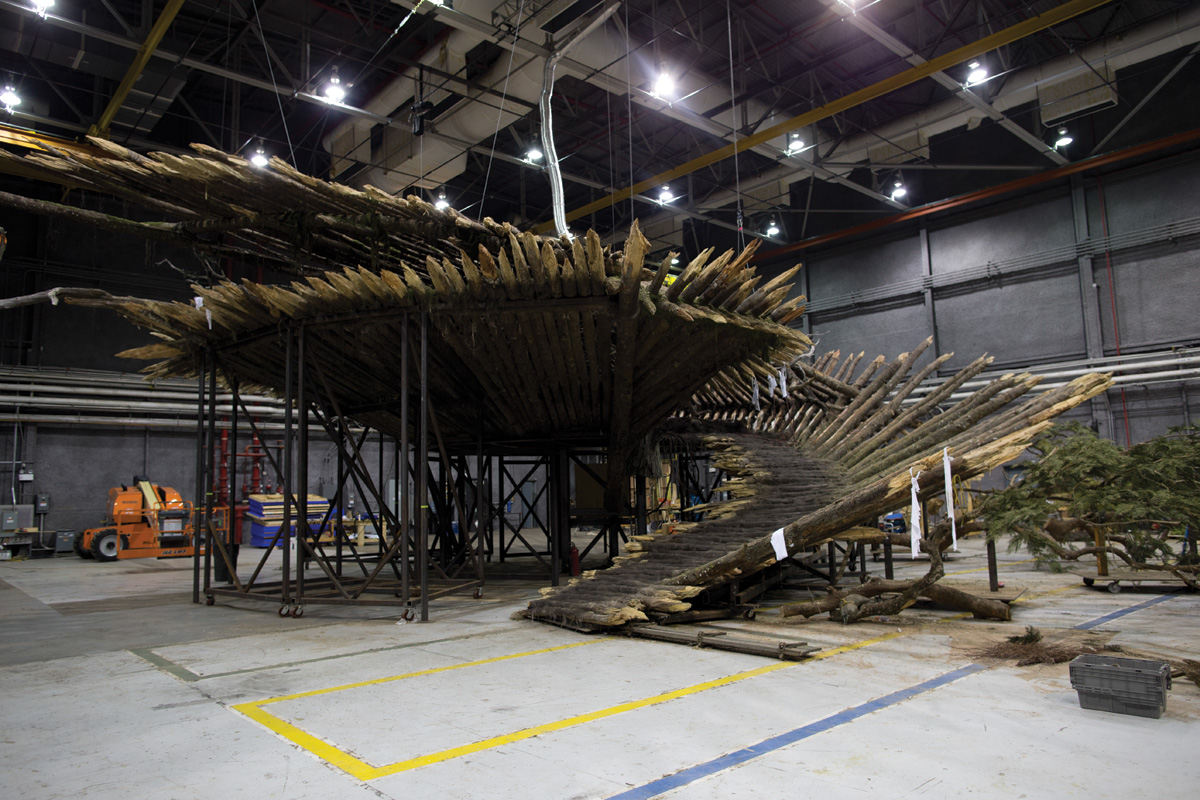 James Chinlund: In a lot of ways, the look of this film doesn’t reference the previous film. We were starting on a clean page, because we were set at a 10- to 15-year jump into the future, and so much has happened to the world since we last saw it.
James Chinlund: In a lot of ways, the look of this film doesn’t reference the previous film. We were starting on a clean page, because we were set at a 10- to 15-year jump into the future, and so much has happened to the world since we last saw it.
Clark: We sat down and asked ourselves hard questions: Why were humans decimated by a virus? What would the stages be, and what would happen to the environment? Could some people be immune to a virus? Would the survivors band together? How would they survive and push forward?
Chinlund: For Ape Mountain, we tried to envision how an ape would go about constructing its habitat in a hostile, foreign land. We imagined they had created a walled fortress, but then, over time, as the pressure from the humans subsided, we see those defenses degraded to some degree. As their civilization expanded, they moved higher into the mountain, Mt. Tamalpais, in Marin. They built structures by pulling trees together to form tripods, and then wove homes into the negative spaces. They’re living in a world from which the humans have retreated, so we played with the idea of their incorporating bits and pieces from the human world that they found. In the end, though, it’s still entirely ape-centric. It represents their struggle within the formerly human world to build their own civilization.
Clark: It’s very animalistic and primitive, yet these apes have intelligence. So there’s design, there’s architecture, there’s function, there’s purpose. But it’s purpose for an ape. Humans would do things differently.
Chinlund: We built the Ape Courtyard, which is the center of the ape world and seat of power, as a set. It was 100 feet in diameter and 30 feet tall, in a parking lot at the Six Flags Amusement Park in New Orleans. Our soundstages were at the former NASA Michoud Assembly Facility.
Clark: We were originally thinking of shooting in downtown San Francisco, which would have been very challenging, as you can’t shut down city blocks. New Orleans had much more available space and scale.
LAND OF THE LOST
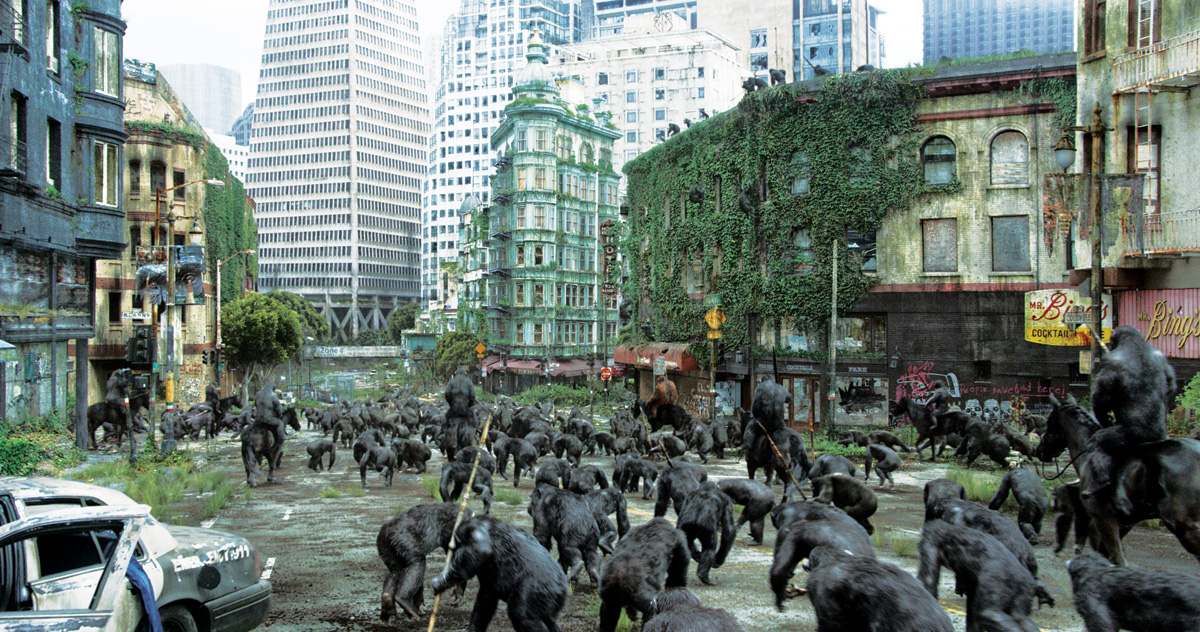 Seresin: My biggest challenge was making everything feel like it was taking place in San Francisco. And between Vancouver, which is overcast, gray and rainy, and New Orleans, which is Southern semi-tropical, it was difficult – the quality of light is so different. You’re going from Pacific Northwest to Gulf of Mexico. So we basically just cut out the sun. We had four 250-foot cranes holding up a 200-foot-by-200-foot scrim. New Orleans has tropical storms, so if there was any lighting, we might have three minutes to drop these huge cranes so we wouldn’t get electrocuted.
Seresin: My biggest challenge was making everything feel like it was taking place in San Francisco. And between Vancouver, which is overcast, gray and rainy, and New Orleans, which is Southern semi-tropical, it was difficult – the quality of light is so different. You’re going from Pacific Northwest to Gulf of Mexico. So we basically just cut out the sun. We had four 250-foot cranes holding up a 200-foot-by-200-foot scrim. New Orleans has tropical storms, so if there was any lighting, we might have three minutes to drop these huge cranes so we wouldn’t get electrocuted.
Chinlund: The last of the humans have formed a colony within the walls of a commercial complex. It’s inspired by a real development in San Francisco at the corner of Market and California. The idea would be that the humans were developing this super-high-tech skyscraper that towers above the base, and their construction was frozen in time when the Simian Virus pandemic struck. You have this beautiful classical architecture at the base, spreading up into this unfinished spire. It was a time capsule of the human history, the old and the new.
Seresin: That was probably the most complex thing I had to get my head around. It was an 80-story building, and the set, which was on location in downtown New Orleans, was four floors high, maybe 40 or 50 feet. You had to imagine it as a kind of a light well, with light coming down between the various parts of the building. But what helped us was having scrimmed the whole thing. It gave the effect of light coming from a long way up, especially on day scenes. And for nighttime, they had some basic electricity around, with batteries and the like.
Clark: We built four stories up, and built the living spaces up inside. James was very smart. We were looking at other ways to incorporate interesting things where apes could interact with the city. The one James found was near where we set our Colony. So we started a project that will actually be realized at some point in San Francisco – which I love. We started their building for them, and they’ll get to see a version of it. Not exactly like theirs, but I think they’ll like James’ better!
FACE TIME
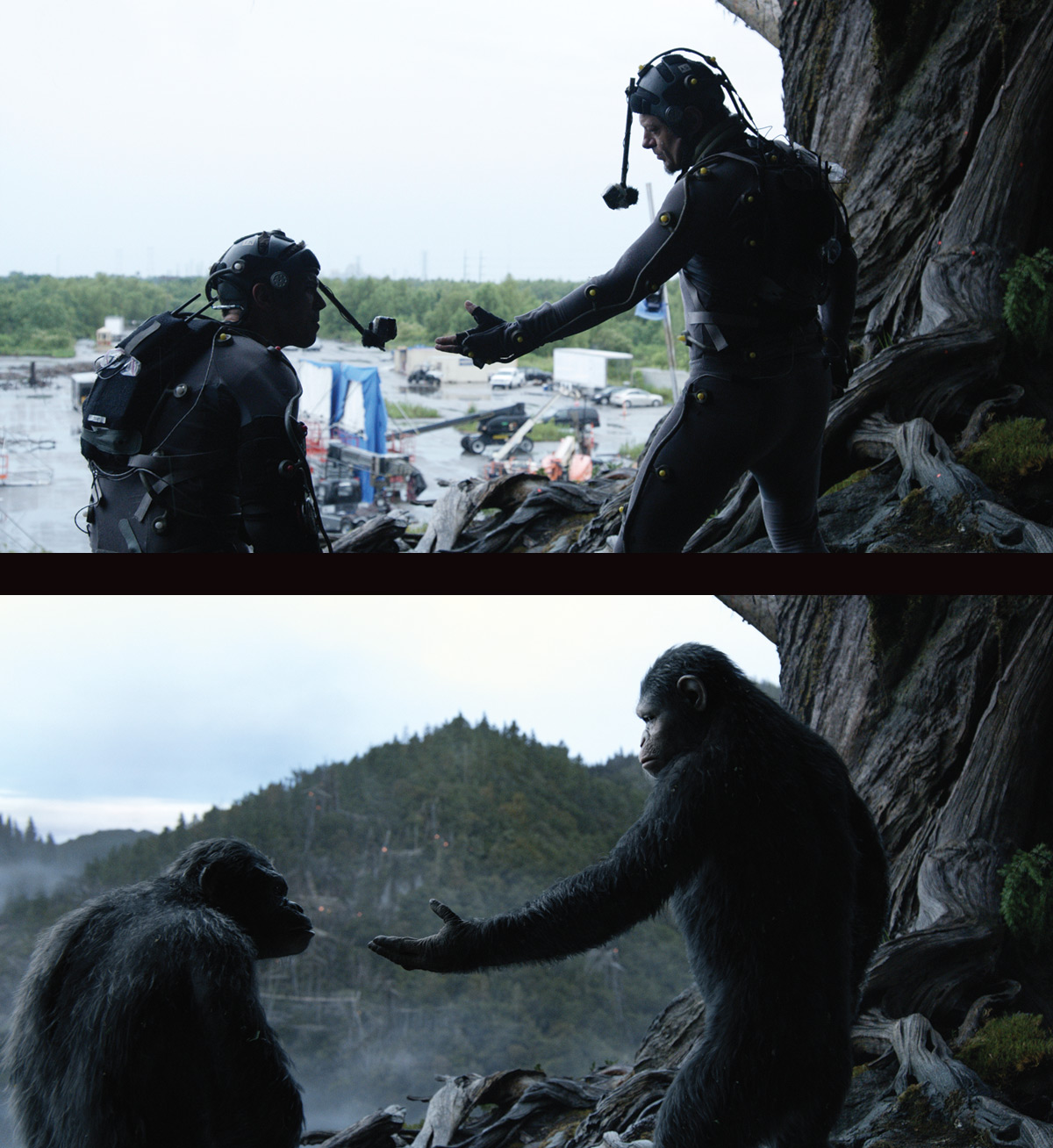 Reeves: There was something about Andy’s work [as Caesar] in Rise that was at a deeper level of emotionality than anything he’d done, and I wanted to know how and why. I asked to see all the shots of Caesar, and then all of the shots of Andy in those same moments on the set, side by side. And what I realized was that the key to the whole mystery about what makes MoCap work is great acting.
Reeves: There was something about Andy’s work [as Caesar] in Rise that was at a deeper level of emotionality than anything he’d done, and I wanted to know how and why. I asked to see all the shots of Caesar, and then all of the shots of Andy in those same moments on the set, side by side. And what I realized was that the key to the whole mystery about what makes MoCap work is great acting.
Dan Lemmon: Performance capture is an evolving technology. When I was working on Titanic, we were using motion capture to create background stunt action. But once the technology got to the point where we needed to create a digital character that was one of the main characters of a film, performance capture became even more important. That shift happened when Andy Serkis played Gollum in Lord of the Rings.
Andy Serkis: The way Peter Jackson explained it to me when I first met him was: “Why should the two actors playing Sam and Frodo have to imagine what Gollum is, when you can have an actor play him?”
Joe Letteri: That [film process] was all about capturing the movement of the body. And Andy was either on the set with the actors, because he needed to physically interact with them, or, if he had scenes that he could do completely on his own, we would put him in a motion-capture volume. If he needed to match the performance of what he did on set, we would play back what he did, and he would physically match it. But there was no way to capture the face; that was all done by animators, watching what Andy did as reference, and painstakingly trying to recreate that performance. For King Kong, we wanted to find a way to do motion capture with the face, which involved gluing dots onto Andy’s face, and then capturing their motion with a separate set of motion capture cameras. That data was analyzed with regard to understanding how the muscles underneath the skin moved.
Lemmon: Kong was a little restrictive in the amount of movement you could do. So when Avatar came along, we developed what was essentially a portable, flexible facial-capture rig, which is what we used on Apes. Makeup dots are painted onto the actors’ faces, and a camera is attached to their heads, by way of a helmet and a little boom arm, along with lights and a microphone. The camera doesn’t actually capture the dots like the motion-capture cameras are doing for the points on their bodies. It’s used as a kind of a detailed, slightly fish-eyed distorted video reference, but also to record the motion of the dots. We then put the actors through a calibration process, where we sit them in a chair, and shoot their face from seven different angles, and run them through a range of motion study, of what their face does when they do different facial expressions. We study the movement of the dots and essentially make a map of what those face dots will look like from the position of that facial camera as they make those expressions, as those individual muscles are fired.
Serkis: There’s a huge difference between a committee of animators creating a character, and the authorship of the role on set between actors and a director, where you’re taking emotional responsibility for the character. [The technology] has progressed extraordinarily in terms of the fidelity to the authored performance. But it’s only partly to do with technology. It’s more to do with having a team of people who fully understand the interpolation of a performance that they are seeing onscreen. They’re taking the data and wrangling it in a way that honors the performance. The facial pipeline is now so refined by Weta and so understood by the artists that do that very delicate phase between taking the actor’s raw underlying emotional performance and translating it into the actual final rendered character. It’s fully understood, spectacularly so.
Lemmon: The big challenge with the motion-capture system comes when we leave the shelter of the stage. Sunlight overpowers traditional motion-capture cameras and systems, which would depend on low-light-output infrared light reflecting off dots on the actors’ bodies. We’ve now changed our reflective dots to what we call “active markers,” which are basically LEDs that we stick to the actors’ bodies. They flash at 120 times per second, and are tuned to infrared, flashing with a really bright pulse of light just as the motion-capture camera’s shutter opens.
Clark: Our goal, with this movie, was to make the audience feel that they were really in the wild, watching people and apes interact. This system allowed us to take these MoCap actors and put them in exterior sets, with real elements like rain and mud and dirt. But when you see these apes, having gone from these MoCap actors, with arm extensions, quadrupedding over real obstacles, and doing it in the rain – once it’s rendered, you cannot believe how cool it looks. The way Matt and Michael have shot it, with shallow depth of field and long lenses, you just go, “Wow – that is a real ape in the wild. And it’s emoting. How is this possible?”
By Matt Hurwitz / Photos by David James – Weta Digital– Courtesy of 20th Century Fox.

